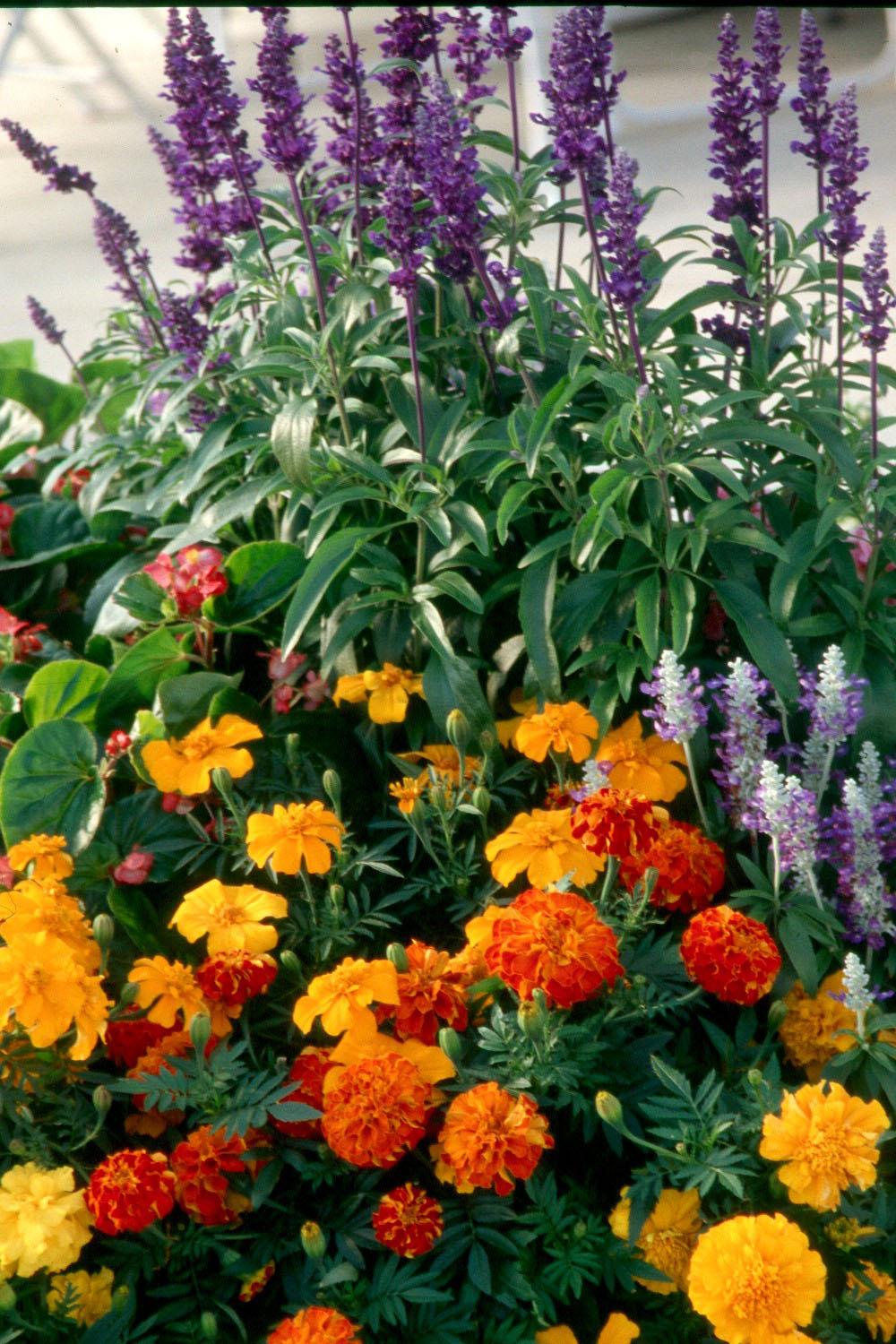Information Possibly Outdated
The information presented on this page was originally released on August 18, 2005. It may not be outdated, but please search our site for more current information. If you plan to quote or reference this information in a publication, please check with the Extension specialist or author before proceeding.
Late-season marigolds cure tired landscapes
By Norman Winter
MSU Horticulturist
Central Mississippi Research & Extension Center
Late yesterday evening, I was surveying the landscape and looking at the results of being gone for almost a week. The conclusion is it is time to begin some late-season planting. If you are like me and ready for a colorful pick-me-up, then late summer- to early fall-planted marigolds could certainly be what is needed.
It's exciting to see what has happened with marigolds the last few years, and 2006 will mark a new era with hybrids. You may hear terms like French Marigolds (Tagetes patula) and African Marigolds (Tagetes erecta), and there are hundreds of varieties associated with each. There are numerous hybrids of the two, adding real confusion. You may find the name American associated with the African hybrids.
Here's something funny: The French Marigolds are from Mexico and Guatemala; the African Marigolds are from Mexico and Central America; and neither of those groups are Mexican Marigolds, which are of the genus Tagetes lucida and actually are from Mexico.
The French and the African Marigolds have the ability to really put on a show. While we may have paid more attention in recent years to the very large-flowered African selections like Inca, Marvel, Antigua and Perfection, there has to be something said for the power of the smaller French-flowered selections.
In the French Marigold group, you will find what are known as French Dwarf Crested types like Aspen, Bonanza and the Janie series. Then there is the French Dwarf Anemone series that includes Durango and Troubadour. Lastly, there are the French Fully Double types, such as the Aurora series. No matter which you choose, the colors are rich and vibrant.
In fall trials at the Truck Crops Branch Experiment Station near Crystal Springs, some of the best performers were Bounty Spry, Bounty Gold, Janie Flame, Safari Bolero, Aurora Red and Aurora Orange. To be perfectly honest, they all put on a show you would have been proud to have in your garden -- spring, summer or fall.
Fertile, well-drained soil and full sun are all that you need to make you look like a garden guru. Well, there might be a couple of other things. First, plant enough to make a real show. One jumbo six-pack isn't enough.
The next thing to remember is the color blue or violet. These are the best complementary colors. If you are growing those in the orange-to-red color scheme, then blue is the best choice as a companion plant. If you are growing those in the yellow range, then violet-to-purple colors may be the best, such as Purple Wave petunia. Don't forget that the oranges and yellows also work well together. This is called an analogous color scheme.
Marigolds also are great for containers. Try using New Wonder scaevola as a great cascading plant and maybe dwarf fountain grass as a taller plant.
To keep that flower production at full speed, feed with light applications of a 12-6-6 or balanced fertilizer about every six weeks. Deadheading the old flowers will keep them looking tidy and the flower production higher.
You may think of spider mites when it comes to marigolds. This dilemma occurs more often with spring-planted marigolds that get attacked in midsummer. Late summer- to fall-planted marigolds are less susceptible to spider mites infestations. Check your local garden center. Even if they don't have fresh marigolds in, they probably soon will or will at least have seeds that germinate quickly.



